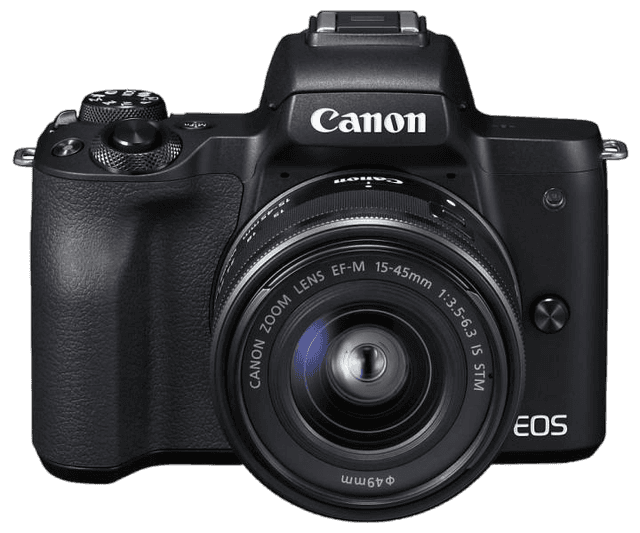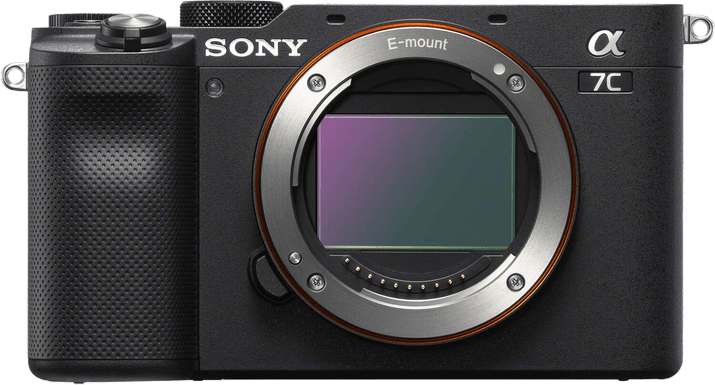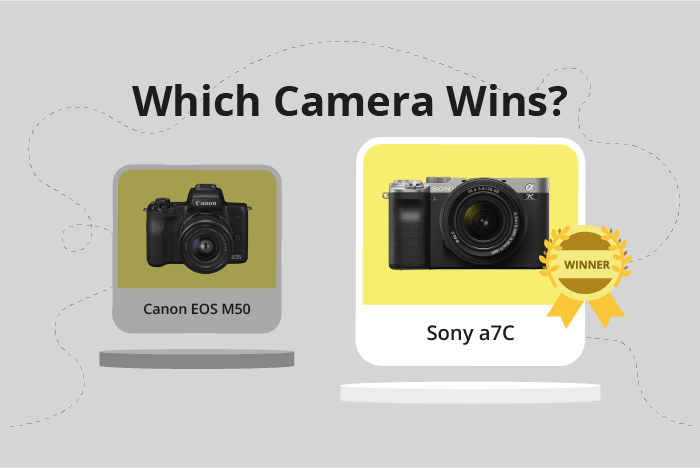Canon EOS M50 vs Sony a7C Comparison
Canon EOS M50

Sony a7C

The Sony a7C outperforms the Canon EOS M50 with a score of 78/100, while the M50 trails behind at 59/100. Both cameras are mirrorless, released in 2018 and 2020, respectively. They share similarities in size, with the M50 measuring 116 x 88 x 59mm and the a7C at 124 x 71 x 60mm. The a7C, however, weighs more at 509g compared to the M50’s 390g.
The Sony a7C has a higher launch price of $1799 compared to the Canon EOS M50’s $779, reflecting its superior features. The a7C’s higher score signifies its better performance, making it a more desirable choice for photographers.
On the other hand, the Canon EOS M50’s lower price and lighter weight might appeal to budget-conscious consumers or those who prefer a more compact camera.
To sum up, the Sony a7C excels in performance and features, while the Canon EOS M50 is a more affordable and lightweight option. Both cameras offer unique advantages, catering to different preferences and needs.
Canon EOS M50 vs Sony a7C Overview and Optics
The Sony a7C wins the optics comparison with a score of 80/100, while the Canon EOS M50 scores 59/100. Both cameras share common specifications, such as 24 and 24.2 megapixels, a shooting speed of 10 frames per second, and a CMOS sensor type. However, the Sony a7C outperforms the Canon EOS M50 in several aspects.
The Sony a7C has a higher DXOMARK score for its sensor, at 95 compared to the Canon EOS M50’s 58. This difference highlights the superior image quality and performance of the Sony a7C. Additionally, the Sony a7C features a full-frame sensor, which is larger than the Canon EOS M50’s APS-C sensor. A larger sensor size contributes to better low-light performance and increased dynamic range. The Sony a7C also has a Sony FE lens mount, offering a wider selection of lenses compared to the Canon EOS M50’s EF-M mount. Furthermore, the Sony a7C includes image stabilization, providing a more stable shot and reducing the chances of blurry images.
On the other hand, the Canon EOS M50 has a Digic 8 processor, which is still a capable processor for handling image processing. However, the Sony a7C’s Bionz X processor is known for its faster performance and better image processing capabilities.
Taking all these factors into account, the Sony a7C is the superior camera in terms of optics. Its higher DXOMARK score, full-frame sensor, wider lens selection, and image stabilization make it a better choice for photographers seeking the best image quality and performance. While the Canon EOS M50 has some merits, it falls short in comparison to the Sony a7C’s optical capabilities.
Canon EOS M50 vs Sony a7C Video Performance
The Canon EOS M50 outperforms the Sony a7C in terms of video capabilities, scoring 91 out of 100, compared to the a7C’s score of 70. This 21-point difference highlights the superiority of the EOS M50 in this category.
Both cameras share some common video specifications. They both have a maximum video resolution of 4K and maximum video dimensions of 3840 x 2160. Additionally, both cameras come with built-in time-lapse functionality. These similarities ensure that both cameras provide high-quality video output and creative options for users.
The Canon EOS M50 surpasses the Sony a7C in video performance due to its higher maximum video frame rate. The EOS M50 can record videos at a staggering 120fps, while the a7C can only reach 30fps. This major difference allows the EOS M50 to capture smoother motion and provide better slow-motion capabilities, making it more suitable for action and sports videography.
On the other hand, the Sony a7C does not have any specific advantages in video capabilities over the Canon EOS M50. The lower score and lack of distinguishing features make it less appealing for users who prioritize video performance.
Considering these factors, the Canon EOS M50 stands as the better choice for those seeking advanced video capabilities. Its higher frame rate offers smooth and dynamic footage, while the shared 4K resolution and time-lapse features ensure both cameras can produce visually stunning content. The Sony a7C, despite its lower score, remains a solid option for those who do not require the additional video performance provided by the EOS M50.
Canon EOS M50 vs Sony a7C Features and Benefits
The Sony a7C takes the lead in this comparison with a feature score of 81/100, while the Canon EOS M50 trails behind with a score of 70/100. Both cameras share several common specs, such as a 3-inch touchscreen, flip screen, WiFi, and Bluetooth connectivity. However, neither camera has GPS functionality.
The Sony a7C outperforms the Canon EOS M50 in various aspects. Despite having the same screen size, the a7C boasts a higher screen resolution of 921,600 dots compared to the M50’s 1,040,000 dots. This difference in resolution contributes to the a7C’s sharper and clearer display, providing a better user experience for photographers.
On the other hand, the Canon EOS M50 also has its advantages. Although it has a lower overall feature score, it may still appeal to users who are satisfied with its capabilities and prefer the Canon brand. The M50’s slightly lower screen resolution does not significantly impact its functionality or image quality.
After examining the features of both cameras, it is evident that the Sony a7C is the superior choice due to its higher feature score and better screen resolution. However, the Canon EOS M50 remains a viable option for users who prioritize brand loyalty and are content with its performance. Ultimately, the decision between these two cameras will depend on individual preferences and priorities.
Canon EOS M50 vs Sony a7C Storage and Battery
The Sony a7C outperforms the Canon EOS M50 in storage and battery, with a score of 45/100 compared to the M50’s 13/100. Both cameras share a single memory card slot, but the a7C accepts SD, SDHC, and SDXC cards with UHS-II compatibility, while the M50 only supports UHS-I compatible cards.
The a7C’s advantage is evident in its battery life and charging capabilities. It offers 740 shots per charge with its NP-FZ100 battery, more than triple the M50’s 235 shots using an LP-E12 battery. Additionally, the a7C has the convenience of USB charging, which the M50 lacks.
The M50 does not outshine the a7C in storage and battery aspects. The a7C’s longer battery life, USB charging, and UHS-II compatibility make it the superior choice for those prioritizing storage and battery performance.
Canon EOS M50 vs Sony a7C – Our Verdict
Are you still undecided about which camera is right for you? Have a look at these popular comparisons that feature the Canon EOS M50 or the Sony a7C:

